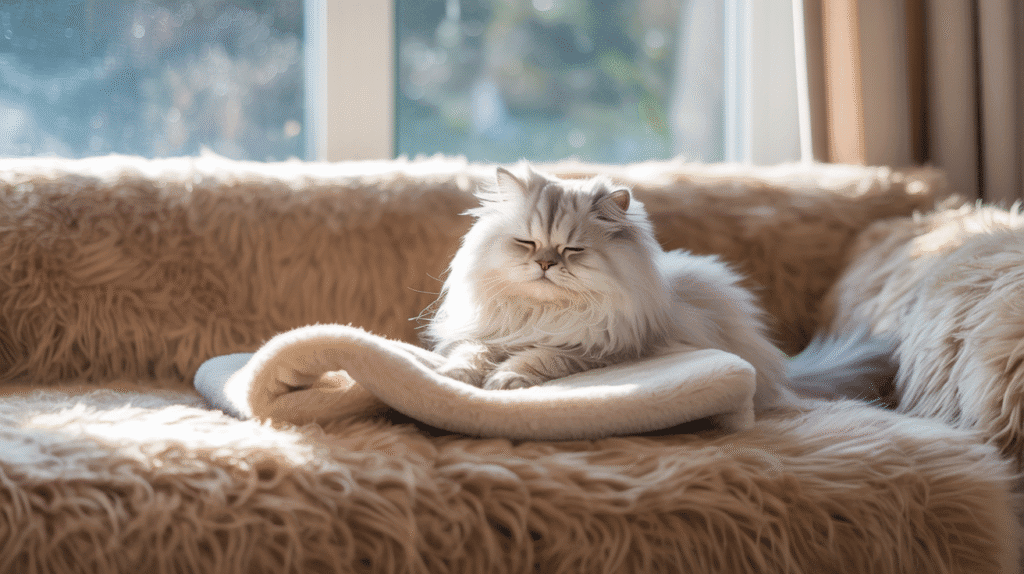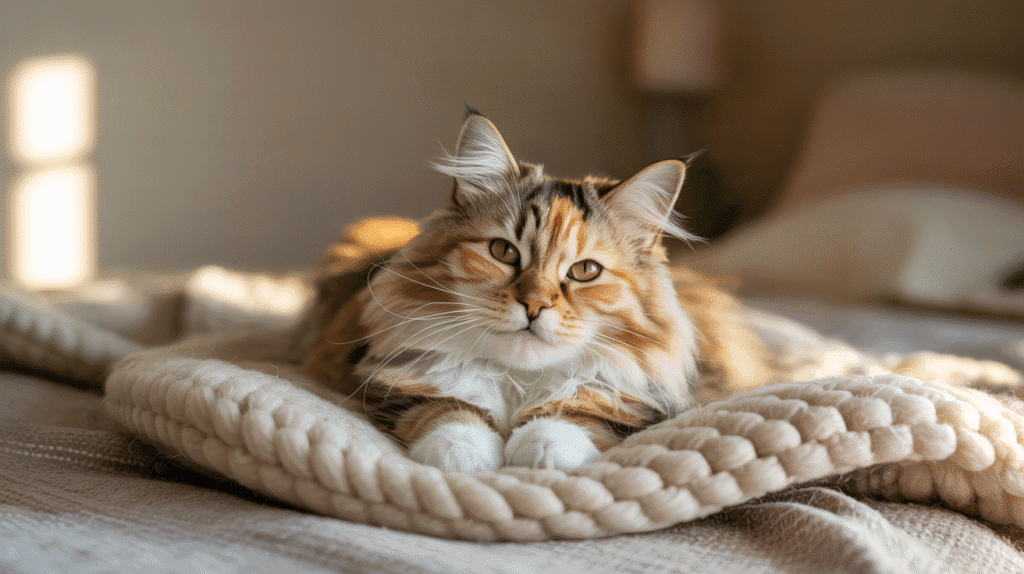
My sweater didn’t survive the biscuits, but I finally learned why cats knead.
I used to think kneading was just an odd little quirk – until my favorite sweater became full of tiny claw holes. My cat sat on my lap, paws pressing rhythmically like she was baking bread.
That’s when I realized there’s much more behind this adorable (and sometimes painful) habit. Kneading isn’t random—it’s rooted in instinct, communication, and comfort. Let’s break it down.
Anúncio
Kneading is that gentle push‑and‑pull motion cats do with their front paws—almost like they’re pressing invisible dough. That’s why many people call it “making biscuits” 🍪. Some cats knead with both paws, others with just one, and the intensity can vary: soft pads or sharp claws out.
It’s usually paired with a relaxed face, slow blinks, and sometimes even purring. For kittens, kneading is a survival behavior. For adult cats, it’s one of the sweetest ways they express comfort, affection, and instinct all at once.

Kneading isn’t just cute—it’s packed with meaning. Here are the most common reasons your cat may turn into a little baker 🐾:
Not all kneading means the same thing. Here’s a quick guide to decode the behavior 🐱👇:
| Context | Likely Meaning | Best Response |
| On your lap ❤️ | Bonding, affection, comfort | Enjoy the moment, maybe protect your clothes with a blanket |
| On soft blankets 🛏️ | Nesting instinct, preparing to rest | Leave them be—it’s part of their bedtime ritual |
| Before sleep 😴 | Relaxing muscles, winding down | Give them space and a calm environment |
| When anxious 😿 | Self‑soothing, stress relief | Offer comfort, reduce stress triggers |
👉 Tip: Pair the kneading with body language (ears, tail, eyes). That’s how you unlock the full meaning.
As sweet as kneading is, sometimes those tiny claws hurt 😅. The good news is you can help without stopping the behavior:
👉 With a few adjustments, you can keep the “biscuits” going without losing your favorite sweater.
Most kneading is harmless and adorable—but there are moments when it may be a red flag 🚨:
👉 If you notice these warning signs, especially if they appear suddenly, it’s best to check with your vet. Cats are masters at hiding pain, and kneading might be their way of coping.
Kneading is more than just a quirky habit—it’s a window into your cat’s emotions and instincts. From kittenhood comfort to marking territory, from stretching muscles to bonding with you, each push of the paw carries meaning. 💛
Yes, sometimes it hurts, but with small adjustments you can protect yourself (and your clothes) without taking away something that brings your cat joy. The more you pay attention to when and how your cat kneads, the better you’ll understand their silent language.
Cats knead on people as a sign of trust and affection. It’s their way of showing that you’re part of their safe space. Plus, with scent glands in their paws, they’re literally marking you as “theirs.”
Yes. While kneading often signals comfort, some cats knead as a form of self‑soothing during stress. If you notice anxious body language—like wide eyes or a twitching tail—your cat may be using kneading to calm down.
You don’t need to stop the behavior—just manage it. Keep nails trimmed, use a blanket as a barrier, or redirect them to a plush pillow. The goal is to protect yourself without discouraging the instinct.
Kneading before sleep is usually a throwback to their nesting instinct. Cats pat down soft surfaces to make them more comfortable, just like their wild ancestors did when preparing a resting spot.
Not at all. Some cats simply don’t knead, and that’s perfectly normal. Cats express comfort and bonding in different ways—through purring, rubbing, or curling up close.